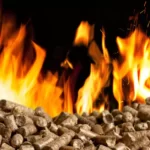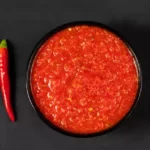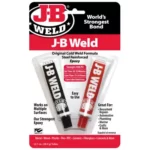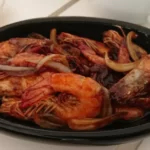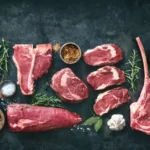Curing salt is a vital ingredient in the preservation of food, particularly meats. Its use dates back centuries and continues to be a popular method for enhancing flavor and increasing shelf-life. When we discuss curing salt, we’re not talking about your everyday table salt. This specialized compound comprises of sodium nitrate or sodium nitrite, which work together to prevent bacteria growth and enhance color in cured products.
The pivotal question for anyone diving into the world of curing is, how much curing salt per gallon of water should you use? Getting this ratio right is critical. It determines the success of the curing process, playing a significant role in the safety, taste, and overall quality of your cured products. Generally, for every gallon of water, you should use a cup of curing salt. But bear in mind, variations in this ratio may occur due to personal preference and the type of meat being cured.
In the realm of food preservation, achieving the correct curing salt-water ratio is as much an art as it is a science. It requires precision and knowledge of factors that can influence this delicate balance. A comprehensive grasp of this concept is an invaluable asset for anyone interested in the curing process.
Curing Salt Basics
Different Types of Curing Salt
In the world of curing, two types of salt are predominantly used:
- Pink curing salt (Prague Powder #1) – Mainly for short-term curing processes.
- Prague Powder #2 – Used in long-term curing and dry aging of meats.
Each type has its unique formulation and uses, making it essential to choose the right one for your curing project.
How Curing Salt Works
Curing salt acts as a food preservative, extending the shelf life of meats. Its antimicrobial properties prevent bacterial growth, particularly the bacteria responsible for botulism, a potentially fatal foodborne illness. Besides, curing salt lends a distinctive pinkish hue to meats, making them visually appealing.
Importance of Correct Salt Measurements in Curing
Factors Influencing Salt Measurement
Several factors come into play when determining the amount of curing salt required. These include the type and size of meat, the desired level of saltiness, and personal preference.
Impact on Food Safety and Taste
A correct salt to water ratio ensures both food safety and quality. Too little salt, and there’s a risk of bacterial growth. Too much, and the meat may become overly salty or even inedible.
Guidelines for Curing Salt Ratio
Common Recommendations for Salt-Water Ratio
As a rule of thumb, for a basic brine, use one cup of curing salt per gallon of water. However, it’s essential to adjust this ratio depending on the type of meat and the desired saltiness level.
Adjusting Ratio Based on Specific Curing Needs
For larger, tougher meats, you might need a stronger brine solution. Conversely, for smaller or more delicate meats, a lighter brine could be more suitable.
Preparing a Brine Solution for Curing
Essential Ingredients for Brine
Apart from curing salt and water, a typical brine solution may contain other ingredients like sugar, spices, and herbs to enhance flavor.
Steps to Create the Perfect Brine
- Dissolve the curing salt in warm water to ensure it is evenly distributed.
- Add any additional flavorings and allow the brine to cool before use.
- Immerse the meat in the brine, ensuring it is entirely covered.
- Store in a cool place and allow the meat to cure for the specified time.
How to Determine the Amount of Curing Salt
Using Digital Kitchen Scales
The most accurate method of measuring curing salt is by using a digital kitchen scale. This tool ensures you use the correct amount of curing salt, eliminating guesswork.
Approximations for Common Curing Projects
If a scale is not available, a general guideline is to use 1 cup of curing salt per gallon of water. Remember, this is an approximation and adjustments may be necessary.
Factors Influencing Curing Salt Ratio
Size and Type of Meat
Different meats require different salt ratios. Larger cuts of meat usually require a higher concentration of salt, while smaller cuts may need less.
Desired Level of Saltiness
Personal preference also plays a role in determining the salt ratio. If you prefer a less salty flavor, you might want to reduce the amount of curing salt used.
Mistakes to Avoid in Measuring Curing Salt
Risks of Over-Salting
Excess salt can make your cured products overly salty and unpalatable. Always measure your curing salt accurately to prevent this.
Risks of Under-Salting
Under-salting is equally detrimental, leading to inadequate preservation and potential bacterial growth.
Frequently Asked Questions about Curing Salt Measurement
Can I substitute table salt for curing salt?
No, table salt and curing salt are not interchangeable. Curing salt contains nitrites or nitrates, which are essential in preserving and coloring the meat.
What happens if I use too much curing salt?
Overuse of curing salt can lead to an excessively salty product. In extreme cases, it could lead to nitrite poisoning.
How long should meat stay in a brine solution?
The length of time meat should stay in a brine solution depends on the type and size of the meat. Typically, it could range from a few hours to several days.
Conclusion
Achieving the correct ratio of curing salt to water is an art every home curer should master. This knowledge is pivotal in creating delicious, safe, and high-quality cured products. Each curing project may require a different ratio, influenced by factors such as meat type, size, and personal taste preferences.
The beauty of curing lies in the balance and harmony of flavors. This process allows us to unlock an array of culinary experiences, guided by the precise measurement of curing salt. As you embark on your curing journey, remember to follow the general guideline of using one cup of curing salt per gallon of water, adjusting as necessary.
Every curing adventure is a lesson, a story etched in the palates of those who partake. With the right amount of curing salt, you become the narrator of this story, bridging the gap between tradition and culinary innovation. Happy curing!


